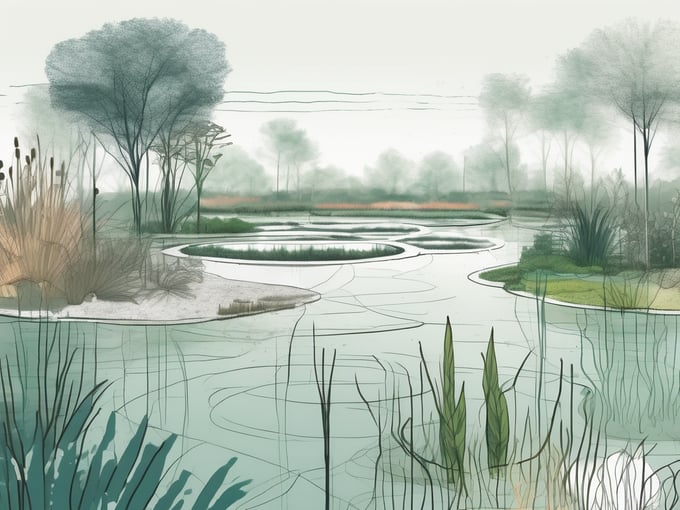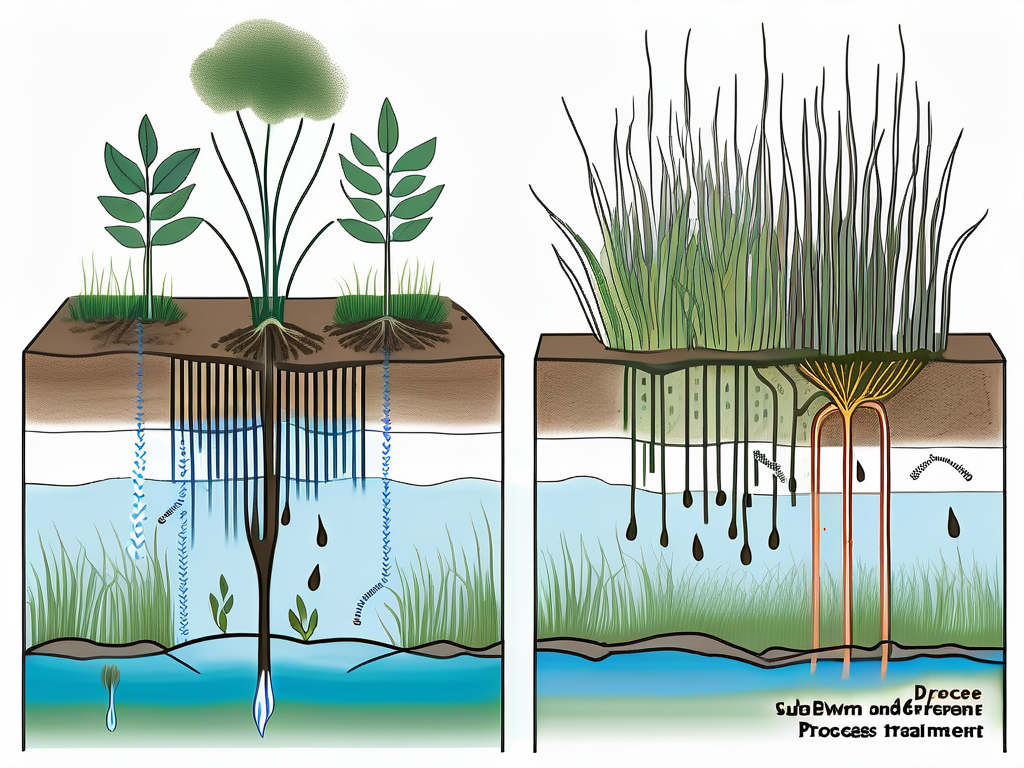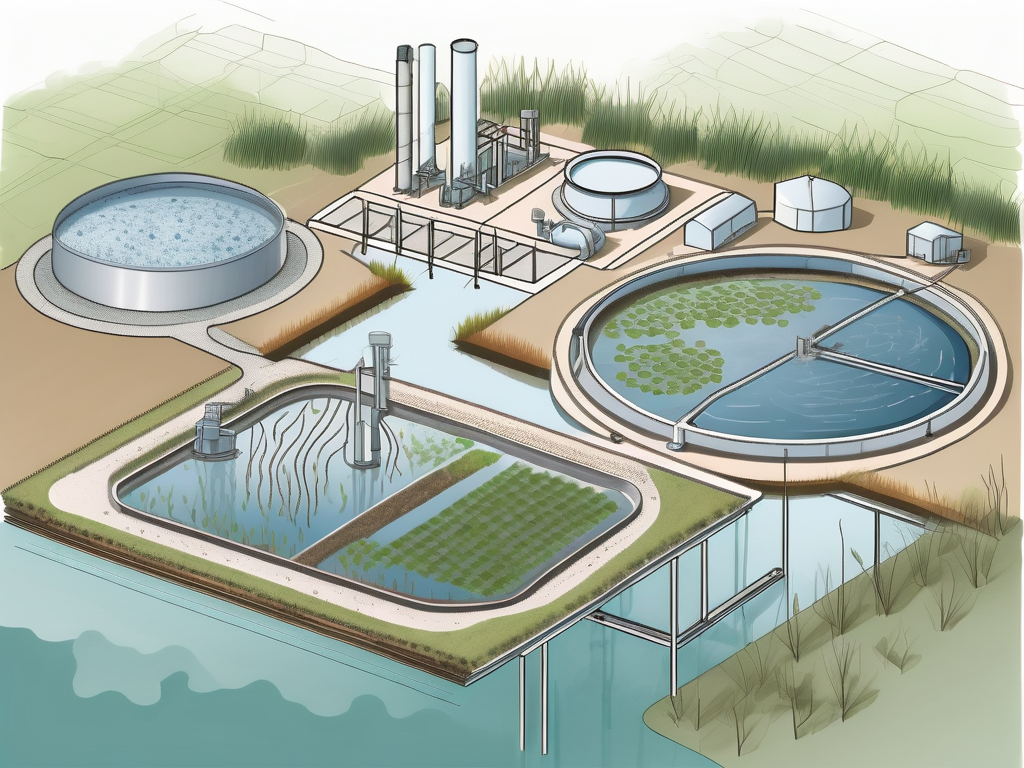
Constructed Wetlands: Wastewater Treatment Explained
Constructed wetlands are engineered systems that use natural processes involving wetland vegetation, soils, and their associated microbial assemblages to assist in treating wastewater. They are designed to take advantage of many of the same processes that occur in natural wetlands, but do so within a more controlled environment.
Constructed wetlands can be designed to treat a variety of wastewater types including domestic sewage, agricultural wastewater, and stormwater runoff. They are ideal for small, rural communities as they require less energy, are less mechanically complex, and are easier to operate and maintain than traditional wastewater treatment systems.
Types of Constructed Wetlands
Constructed wetlands can be broadly classified into two types: surface flow and subsurface flow. The primary difference between these two types lies in the flow path of the wastewater.

Surface flow wetlands, also known as free water surface wetlands, are designed to mimic natural wetlands. The wastewater in these systems flows over the soil surface and is treated as it comes into contact with the wetland vegetation and soils.
Surface Flow Wetlands
Surface flow wetlands are characterized by the presence of water at the surface, similar to a natural marsh or swamp. The water level is typically shallow, usually less than a meter deep, allowing for the growth of emergent wetland plants.
The wastewater in surface flow wetlands is treated through a combination of physical, chemical, and biological processes. These include sedimentation, filtration, adsorption, microbial degradation, and plant uptake.
Subsurface Flow Wetlands
Subsurface flow wetlands, on the other hand, are designed such that the wastewater flows beneath the surface of the soil or substrate. The wastewater is treated as it percolates through the substrate and comes into contact with the roots of the wetland plants.
The treatment processes in subsurface flow wetlands are similar to those in surface flow wetlands, but the absence of water at the surface can make these systems more aesthetically pleasing and less prone to issues with mosquitoes and odors.
Design and Construction of Constructed Wetlands
The design and construction of a constructed wetland requires careful planning and consideration of a number of factors. These include the type and volume of wastewater to be treated, the local climate and topography, and the availability of suitable wetland plants.
The size of the wetland is typically determined based on the volume of wastewater to be treated, the concentration of pollutants in the wastewater, and the desired level of treatment. The wetland should be designed to maximize contact between the wastewater and the wetland vegetation and soils, as this is where most of the treatment processes occur.
Selection of Wetland Plants
The selection of wetland plants is an important aspect of the design process. The plants provide a surface for microbial growth, assist in the removal of pollutants through uptake and transformation, and contribute to the structural stability of the wetland.
Commonly used wetland plants include reeds, rushes, and cattails. These plants are typically chosen for their ability to tolerate and thrive in waterlogged conditions, their high productivity, and their ability to promote the necessary microbial processes for wastewater treatment.
Construction Materials and Techniques
The construction of a constructed wetland involves the excavation of a basin, the installation of a liner to prevent the wastewater from seeping into the ground, the addition of a substrate (usually gravel or sand), and the planting of the wetland vegetation.
The construction materials and techniques used can vary depending on the specific design of the wetland and the local conditions. However, the goal is always to create a stable, functioning wetland that can effectively treat the wastewater over the long term.
Operation and Maintenance of Constructed Wetlands
Once constructed, a wetland requires regular operation and maintenance to ensure its continued effectiveness. This includes monitoring the water quality, managing the wetland vegetation, and maintaining the hydraulic structures.

Monitoring the water quality involves regular testing to ensure that the wetland is effectively removing the pollutants from the wastewater. This can include testing for parameters such as biochemical oxygen demand (BOD), total suspended solids (TSS), and nutrients (nitrogen and phosphorus).
Vegetation Management
Managing the wetland vegetation involves ensuring that the plants are healthy and productive. This can involve regular harvesting to prevent the plants from becoming too dense and to remove nutrients that have been taken up by the plants.
In some cases, it may also involve replanting or introducing new plants to maintain the diversity and health of the wetland ecosystem.
Hydraulic Structures Maintenance
Maintaining the hydraulic structures involves ensuring that the structures are functioning properly and that the water is flowing through the wetland as designed. This can involve regular inspection and maintenance of inlet and outlet structures, flow distribution systems, and water level control structures.
Regular maintenance can help to prevent issues such as clogging, erosion, and damage to the structures, which could impact the performance of the wetland.
Benefits and Limitations of Constructed Wetlands
Constructed wetlands offer a number of benefits as a wastewater treatment option. They are cost-effective, energy-efficient, and environmentally friendly. They also provide habitat for wildlife and can be used for educational and recreational purposes.
However, constructed wetlands also have some limitations. They require a large land area, can take time to become fully effective, and may not be suitable for all types of wastewater. They also require regular operation and maintenance to ensure their continued effectiveness.
Benefits of Constructed Wetlands
One of the main benefits of constructed wetlands is their cost-effectiveness. They are typically less expensive to construct and operate than traditional wastewater treatment systems. They also require less energy, as they rely on natural processes for treatment.
Constructed wetlands also provide habitat for a variety of wildlife, including birds, amphibians, and insects. This can contribute to local biodiversity and provide opportunities for education and recreation.
Limitations of Constructed Wetlands
One of the main limitations of constructed wetlands is their land requirement. They require a large land area, which can be a constraint in urban or densely populated areas.
Constructed wetlands can also take time to become fully effective. It can take several years for the wetland plants and microbial communities to establish and for the wetland to reach its full treatment potential.
Furthermore, while constructed wetlands are effective at removing many types of pollutants, they may not be suitable for all types of wastewater. For example, they may not be effective at removing certain types of industrial pollutants or pathogens.
Future of Constructed Wetlands
The future of constructed wetlands looks promising. With increasing awareness of the need for sustainable and environmentally friendly wastewater treatment options, the use of constructed wetlands is likely to continue to grow.
Research is also ongoing to improve the design and performance of constructed wetlands, to broaden their applicability, and to better understand the complex processes that occur within them.
Advancements in Design and Performance
Advancements in the design and performance of constructed wetlands are being driven by ongoing research and development. This includes research into the use of different types of substrates, the selection and arrangement of wetland plants, and the use of novel design features to enhance treatment performance.
For example, research is being conducted into the use of different types of substrates to enhance the treatment performance of subsurface flow wetlands. This includes the use of lightweight expanded clay aggregates, which have been shown to enhance the removal of certain pollutants.
Broadening Applicability
Research is also being conducted to broaden the applicability of constructed wetlands. This includes research into the use of constructed wetlands for the treatment of different types of wastewater, including industrial wastewater and stormwater runoff.
For example, research is being conducted into the use of constructed wetlands for the treatment of stormwater runoff. This includes the use of wetlands to remove pollutants such as heavy metals and hydrocarbons from stormwater runoff.
Understanding Complex Processes
Finally, research is being conducted to better understand the complex processes that occur within constructed wetlands. This includes research into the microbial communities that play a key role in the treatment process, and the interactions between these communities and the wetland plants and substrates.
For example, research is being conducted into the role of microbial communities in the removal of nitrogen from wastewater. This includes research into the processes of nitrification and denitrification, which are key to the removal of nitrogen from wastewater.



